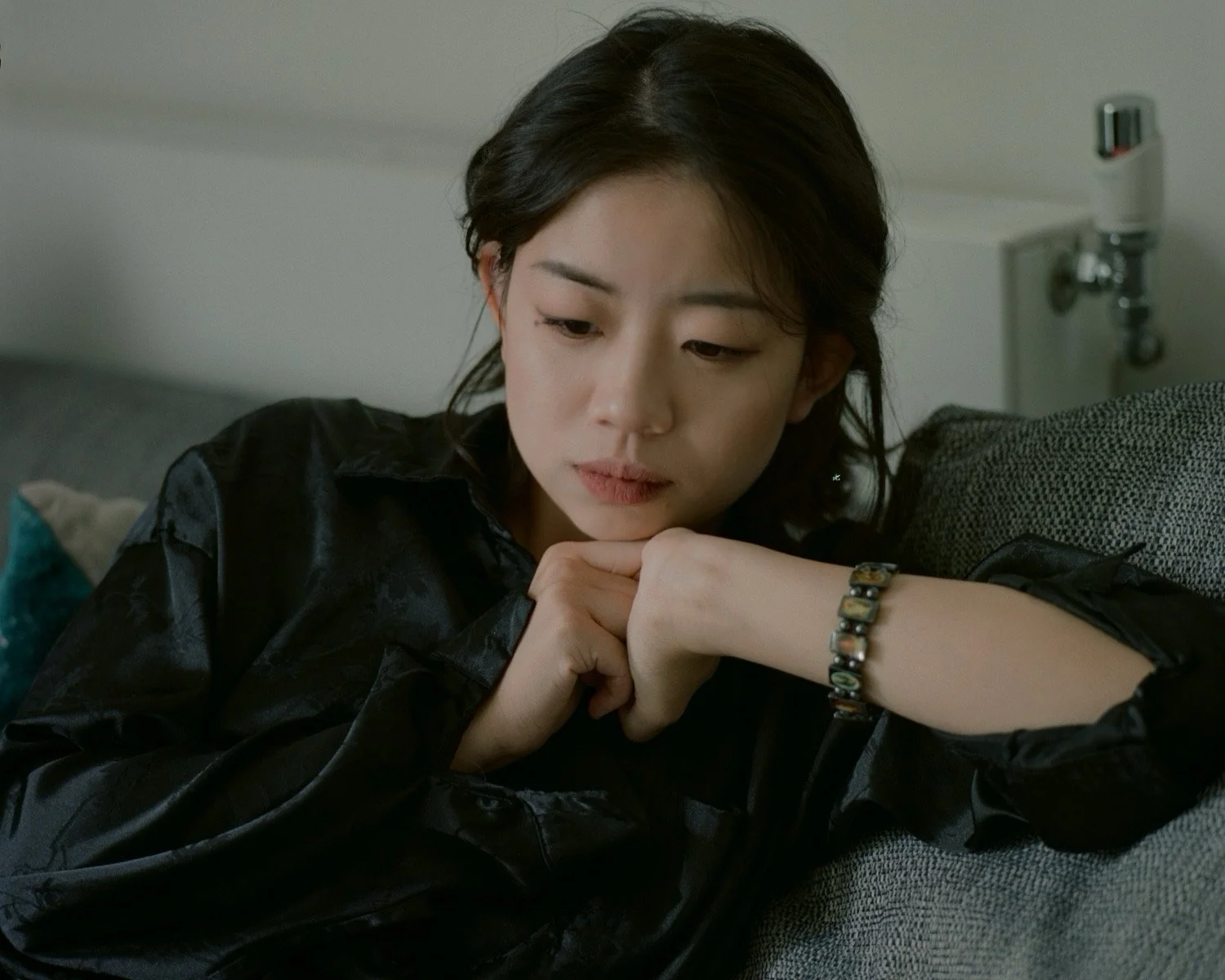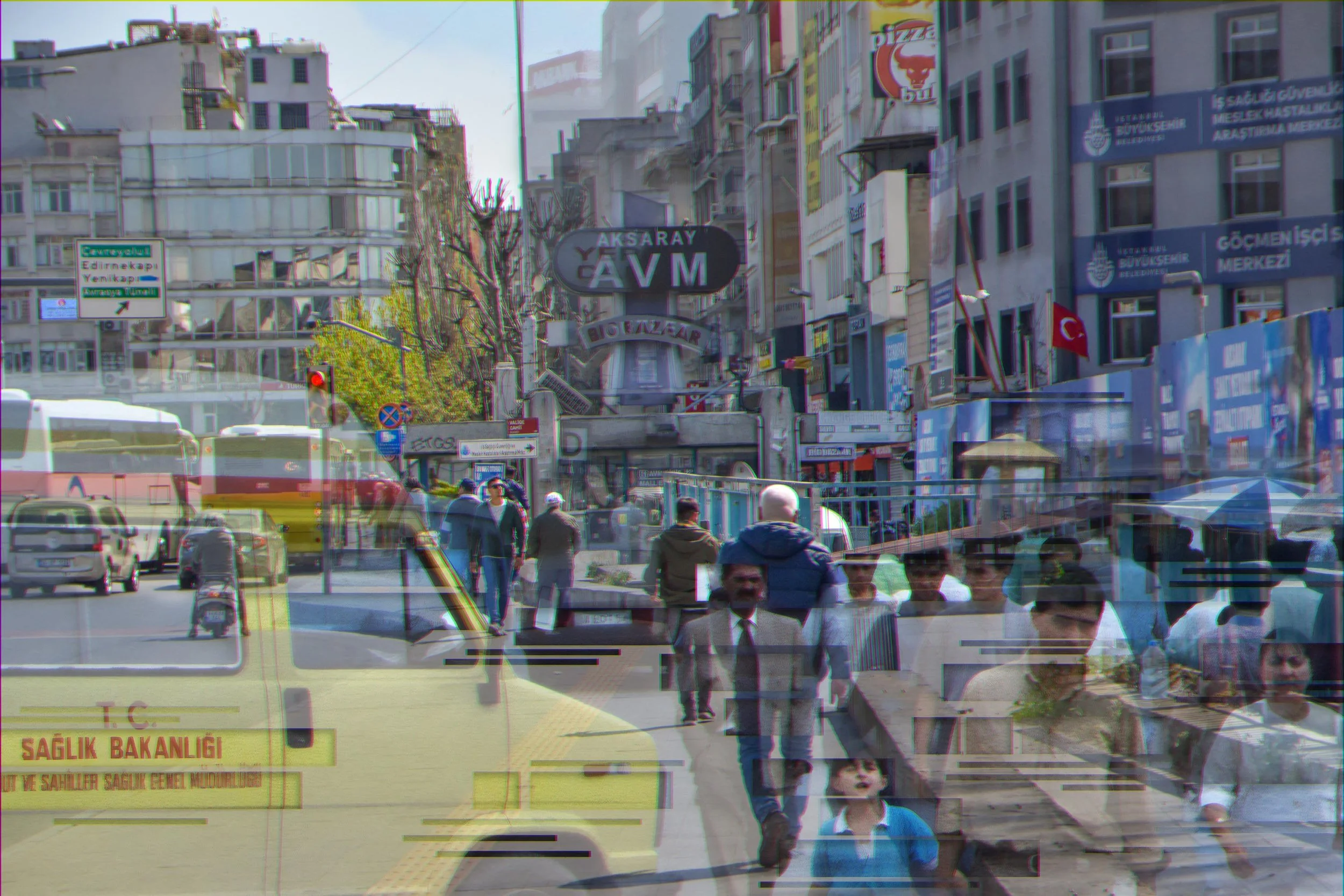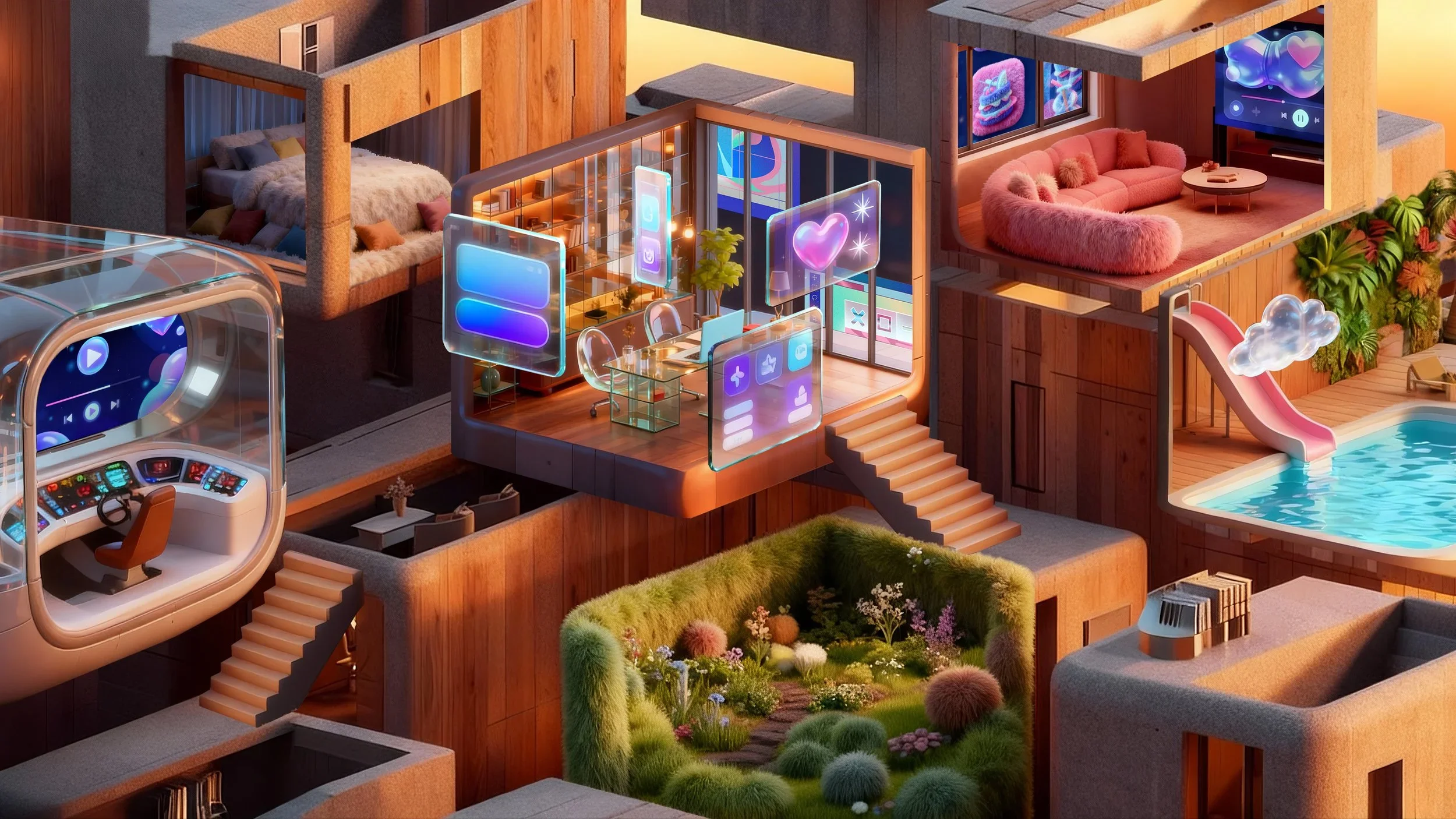10 Questions with Shan Lyu
Shan Lyu is a London-based Chinese artist, writer, and music producer whose multidisciplinary practice explores the intersections of sound, space, and information systems. With a Master's degree in Fine Art from the University of the Arts London, she combines creative writing, sonic composition, and interactive installation to investigate how spatial structures shape perception and how information circulates within social and cultural contexts.
Shan has participated in numerous group exhibitions internationally in Shanghai, Beijing and London. Her writing and sound-based works have been published in journals such as Limit Experience (NY) and Indelible by the London Arts-Based Research Centre. Rooted in both artistic inquiry and cultural research, her work invites audiences into immersive environments that engage with the sensorial and conceptual dimensions of lived experience.
Shan Lyu - Portrait
ARTIST STATEMENT
“My body of work combines experimental sound and intimate sonic perception to investigate themes of sonic spatial structure and circulation of information systems. With a background in music practice, I emphasise the engagement of listening in art making, continually setting the context of my works in intimate sonic perception inherent in our surroundings.
The forms of my works range from sound sculpture, sonic performance, transformation between music and codes to digital sound tour. Close to the intensity of intimacy, my creative process involves sound collections from the context of urban and natural living spaces, interpretation of visual and auditory signs, and revealing the operation of sensitivity.
The current focus of my practice revolves around the sonic and visual exploration of transportation systems. Public transport and mapped routes, initially a digitised representation, became a drawing embodying comprehensive information on natural terrain. Inspired by acoustic simulation techniques, my work draws parallels between mapping and the structure of music. This expanded into an investigation of traffic routes, translated into visual scores that parallel the structure of music-making. The resulting compositions capture the synchronised movement of humanity's trajectories, presenting an inclusive and expansive picture of circularity and migration. A significant aspect of my practice involves contemplating the audience's perception of sound sources. I aim to engage the audience in a contemplative environment, crafting a listening experience that responds to the specific context and setting. I am seeking ways to create a listening room that is designed to captivate focused and gathered listening and inclusivity.”
— Shan Lyu
The Real Perform notation 3, digital composition, 2023 © Shan Lyu
INTERVIEW
First of all, how did your journey into art begin? And when did you first realise you wanted to be an artist?
I have been studying art and music since I was 3 years old, started with sketching and Chinese brush painting, then transitioned to oil painting around the age of 12, then eventually, I went to an art school where I started on contemporary art practice, that's when I realised I have spontaneously chosen the path of becoming an artist. Maybe it's grand to say so, but it does feel like a continuous journey. It's been a process of constant experimentation and discovery, of finding the medium that I see my roots in.
You have a background in music. How does that influence your visual and installation-based practice?
I'm actually not an expert at playing musical instruments, but I do play and practice a lot. The act of practising with this medium is an insight and revelation of my muscular sensitivity. Music, sound and listening are, for me, the most dominant sense in all the sensory perceptions. My visual works and installations are designed as vessels for sounds, where the two mediums intersect to construct a space to emerge sensitive insistence of unconscious attention to the experience itself. The visual presentation is the interpretation of listening, while the soundscape fluidly generates a guiding, immersive image as a whole. Theoretically, it's an interdisciplinary practice. However, it's not just about the dimensions in the installation-based works; it's a model I want to demonstrate that visual output and music can be interchangeable. This can be found in many of my notation works that connect visualisation and sound systems. For example, in 'The Real Perform', there's a video of a conductor conducting a piece of digital, pre-recorded music. It's an experiment in the audience's conscious and unconscious perception. This audio-visual setup tests the degree of attention paid to the visual and auditory senses, and how a cooperation is established. My practice isn't bound by disciplines, it's about dissolving them.
The Real Perform, exhibition view, 2023 © Shan Lyu
You've worked across Shanghai, Beijing, and London. How do the different environments or cultures of these cities reflect in your art?
Working across these cities is also working across the differences of distinct cultural and artistic environments. My earliest practice started in Shanghai, where I could feel the fast-paced urban rhythm and density of information flow, and it reflects in the artistic preference within the art communities. There were a lot of critical reviews, and my works were highly conceptual.
The main body of my practice is developed in London. It provides a space for interdisciplinary thinking and open experimentation. The diversity and historical complexity of the city support my interest in translation across mediums, from visual to sonic, from map to score. It's also where I began working with field recordings and experimental compositions more seriously.
Can you describe your creative process when developing a new piece? Where do you get your inspiration from, and what steps do you take to go from the first idea to the final outcome?
I'm often inspired by an intriguing piece of sound or a specific sensory perception, something that resonates even before I fully understand why. From there, I begin to investigate the source of that sensation, exploring through the body's physiological responses and sensory memory, which often leads me into psychoanalytic research or theories around consciousness.
Based on that research, I return to my initiatives with more reflection. I also start to consider the context in which the work will be presented, the settings, and how the audience might engage with the piece both sonically and spatially. I see each of my works as a combination of subject research and intuitive perception for the sphere.
Your works often explore systems like transportation routes. What draws you to these structured, everyday networks?
One obvious reason is that I am an enthusiast of aviation radio. When listening to ATC (where legal), I am often astonished by the intensity and precision in the exchange of information that can be carried through language and audio. These networks are deeply embedded in mundane daily life with high repetition and structure. The more flight activity expands globally, the harder it becomes to grasp the enormous scale and complexity of simultaneous travel, all of which is supported by meticulous systems of planning, coordination, and communication. The flow of communications, the activities of transmitting and receiving, map out an architectural structure that is invisible, and remain exclusive with coded language and specific transmission formats that are inaccessible to most people. It's almost colonial. The codes and the encrypted languages are usually veiled. What appeals to me the most is the concealed, the unknown, the things we can sense but not fully decode.
I have also been looking into Very Low Frequency, the signal that has been found to interact with particles in space, transmitted from ground stations at huge powers to communicate for maritime transport and military purposes. I used to set up the antenna for collecting VLF signals on an open rooftop, the signals I've obtained are encrypted information belonging to a coding system. While I, as the audience, may not know the specific meanings of these signals, they represent a detection into the ubiquitous and intricate system. There is even a VLF signal from nature, it is reallyfascinating.
The Real Perform notation 1, digital composition, 2023 © Shan Lyu
The Real Perform notation 2, digital composition, 2023 © Shan Lyu
What does "intimate sonic perception" mean to you, and how do you invite audiences to experience it?
I was influenced by the phenomenology of 'intimate immensity' that Gaston Bachelard described in his book "The Dialectics of Inside and Outside". The concept of "intimate space" is a type of space that is closely connected to our emotions, memories, and sense of self (closet, wardrobe, etc.). It is often within this small and enclosed space, through the emotional connections, that we experience the feeling of spaciousness or vastness.
In my work, it means dialogue between "I", as the subject for intimacy, and the vast discourse of "non-I". It is reflected in many of my works when considering the physical set-up and environment of the showcase. One of which is a sound walk in Hyde Park, where there are sections in the park that transition from the open lawn with a lot of people to the original natural area with lush trees, and going deep in the woods is the moment to experience the limitless immensity extended from the individual. The sound walk matches signals collected by an electromagnetic induction microphone with the scenes in the forest. By listening to the signal scene and reflecting on their physical environment, the feeling of immensity arises from the interaction between our imagination and the physical boundaries of the space. The intimate perception is a subtle sensation, and it does require some arrangement.
You often turn sound into visual scores. How do you translate between what we hear and what we see?
Fundamentally, they are ONE. I'm interested in how time, rhythm, frequency, and texture in sound can be expressed visually, and how those visual elements in turn guide how we listen. I take the process of making graphical scores, or mapping sound waves on a piano roll, to allow me to explore sound as a kind of visual structure in motion. The visual representation itself can also generate inner listening and experiential impression, a sound that you listen to from inside yourself. What we hear and what we see are interchangeable. I want to invite the audience to experience sound not just temporally, but spatially, like moving through a map or a landscape, with listening becoming an act of exploration.
What role does the environment, either urban or natural, play in shaping your sound collections?
My past practice has looked at urban and natural environments, respectively, as well as how they can be linked up by sound source or even fused through sonic systems. The boundary between urban and natural isn't fixed. Through sound, they often blur. Referring again to the Hyde Park sound walk project, the tones and particles of the urban sound source are manipulated to resonate with the natural scene. Bridging these environments is also an activity for experiencing intimate immensity.
Crimson Ascent (赤铸天阶), charcoal drawing, 11x11 cm, 2024 © Shan Lyu
Phantom Birth (玄生魍魉), charcoal drawing, 11x11 cm, 2024 © Shan Lyu
What are you currently working on, or what themes are you hoping to explore next?
A project I'm currently working on continues the translation of natural environment into sound collection - translating oceanic phenomena into a sonic and perceptual experience, exploring the sea as both a macrocosmic acoustic archive and integrating planetary information flow into a harmonic and unified listening experience. It's actually an effort to align with alchemical principles in music composition. I refer to alchemical philosophy ("resonance of the spheres") and sonic transmutation, and this is demonstrated by collecting and converting field recordings, wave spectrum data, and Very Low Frequency (VLF) signals, the visual and physical information about the ocean into audible, tangible vibrations.
I'm fascinated by the concept of philosophical alchemy, though in work, it's not about alchemy itself, but it's about how its ideas of inner transformation can be embedded into my whole creative process. It's intriguing that the symbols and diagrams used in alchemical manuscripts can also be interpreted as musical scores, it certainly offers ways of composing, reading, and listening and this thematic intersection will continue to guide my practice.
And lastly, where do you see yourself and your work in five years from now?
I'm seeing myself expanding my network to create large-scale works that contribute to broader cultural landscapes. I plan to take part in artist residencies that allow me to engage with and respond to larger urban or natural environments, and also develop my work into a live performance that brings more opportunities to connect with widerand more diverse audiences. I aim to broaden my presence in both Europe and the US, expanding the creative footprint and collaborating with new communities and institutions.
Artist’s Talk
Al-Tiba9 Interviews is a promotional platform for artists to articulate their vision and engage them with our diverse readership through a published art dialogue. The artists are interviewed by Mohamed Benhadj, the founder & curator of Al-Tiba9, to highlight their artistic careers and introduce them to the international contemporary art scene across our vast network of museums, galleries, art professionals, art dealers, collectors, and art lovers across the globe.





















